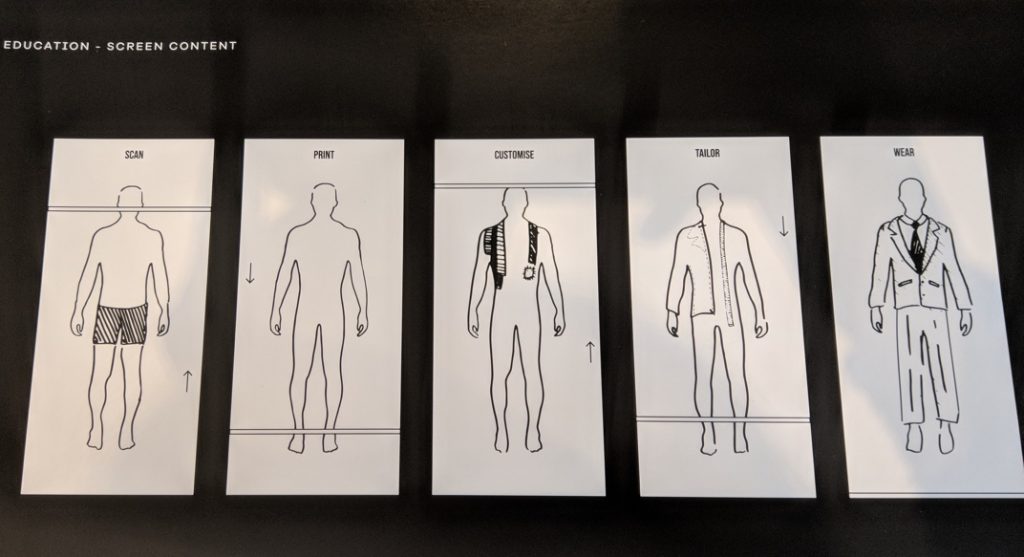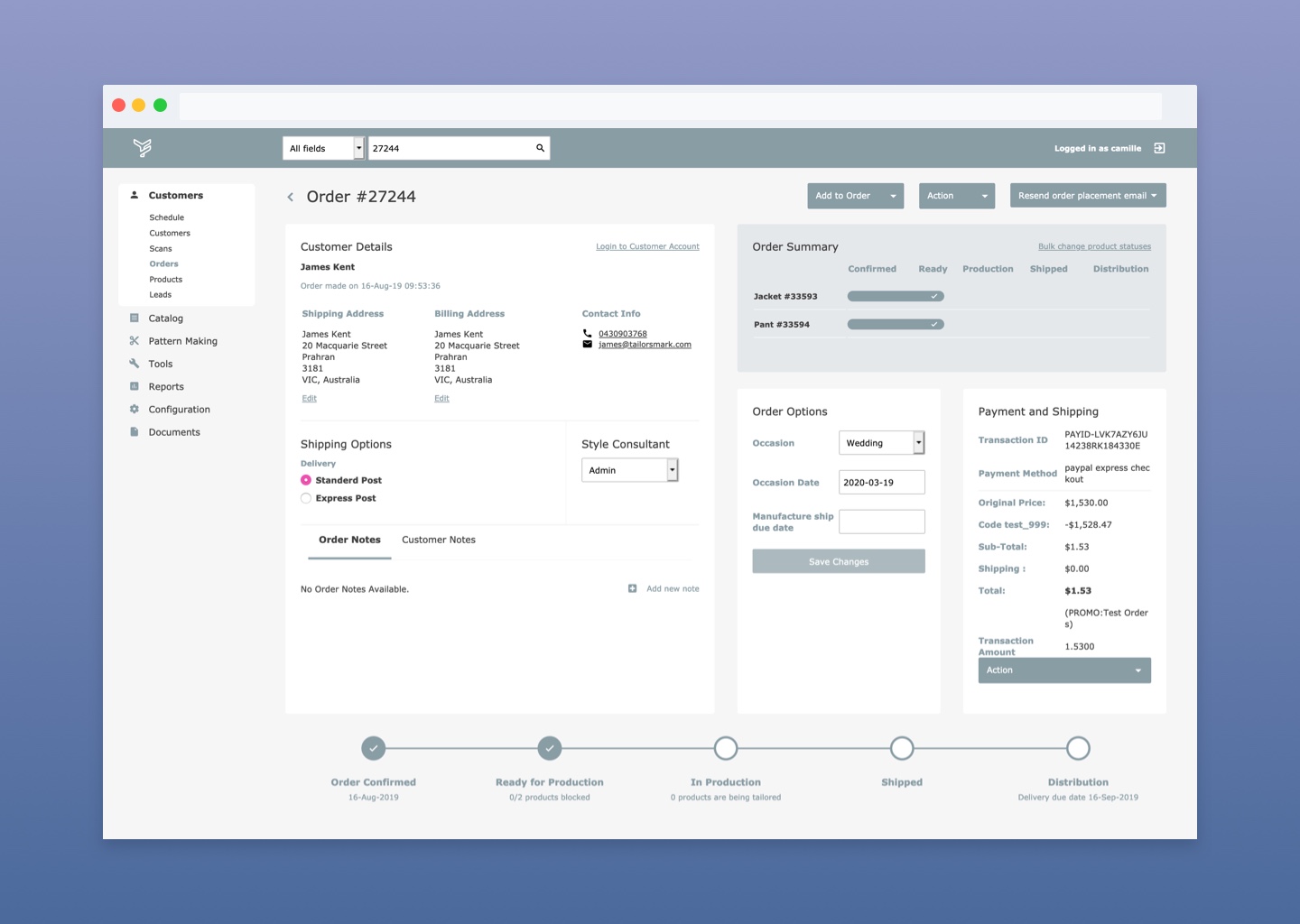This, for now, will not be a case study. Rather, I will be describing what I do as the at a custom wear startup Tailors Mark.
Tailors Mark is a proof of concept for scanning, printing, and body measurement research and hardware built by the sibling company Tec.Fit. We are committed to making the best fit through custom wear by providing tools for every step of the journey.
I design apps that are used by people from a variety of roles. It could be for managing orders, or customers, or hardware. It could be a web app accessed on a laptop or phone, or it could be an app built on the scanner to instruct a customer how to get scanned.
I design for:
- Staff who manage orders
- Tailors or style consultants who manage customers
- Vendors who manufacture the suits
- Clients who license our software
Most of the time I am designing internal tools. New features are used by my colleagues as soon as they are live. We are a very small team, and I wear a second hat: product management. I design for bug fixes, I design for management and production workflows, but I also ruthlessly prioritize and make daily decisions based on time and cost.

Challenges
Tailoring and hardware are new and unfamiliar territories for me — which makes designing my current projects extremely exciting. I love learning about new industries, and it feels very rewarding when I feel like I am on the road to nailing my colleague’s pain points.

There are challenges in every company:
- Our dev team is entirely remote, and there are some gaps in their skill sets that I have to compromise with
- There are some legacy decisions I have to work around, so some of our processes sound a bit convoluted
- I need to manage my time wisely because my day is split doing design work, management, and meetings
- A number of projects are running in parallel, and there is only one me
Despite the challenges, work is rewarding. The good news is, there’s a TON of improvements to be made, an endless list of pain points to be addressed. I have never designed tools for tailoring before. Sometimes I need a few days to really understand how something works.
My Process
- Prototype
- Clarify
- Collaborate
I prototype designs on Invision as much as I can. It’s easier to share and explain, plus during busy times my teammates can provide feedback even when they’re unable to join a meeting. It’s also excellent for design hand-overs remotely done with developers.
I ask and clarify. I would approach our head tailor, for example, if I want to understand what his needs are when garments need to be altered.
I also involve the team in workshops whenever I can. Some of them may have more experience with the different user roles that I am designing for, and so I get invaluable insights from collaborations.
Success
I consider a project successful when:
- my colleagues are able to do their work faster and more efficiently.
- our customers have a better experience, from fitting to delivery, because the tools we use make the customer experience and production process smoother.
For more stories about what I do or what I’m working on, drop me a note and I’m happy to make time for a chat.
